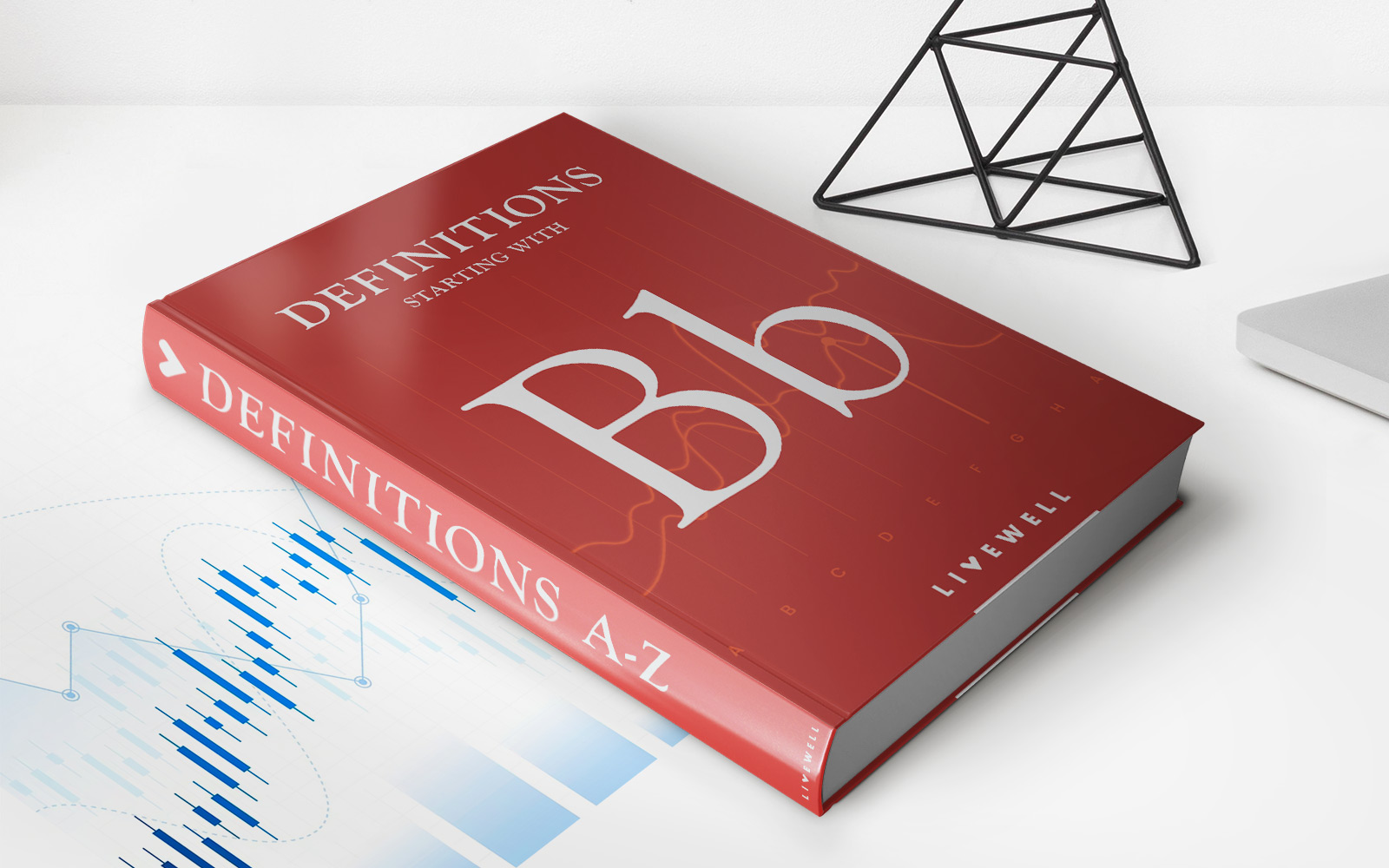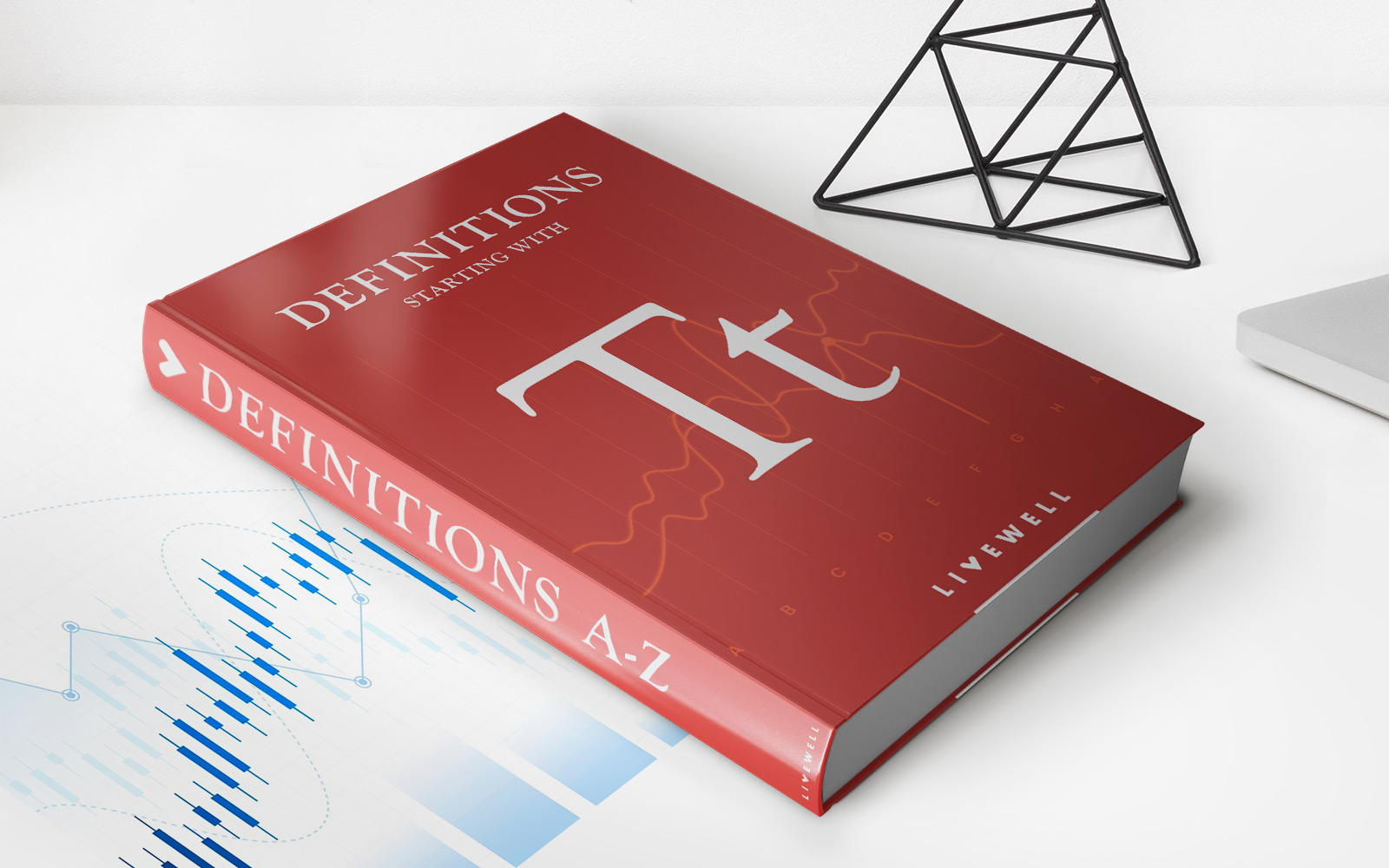

Finance
What Is A Life Insurance Dividend?
Modified: February 21, 2024
Discover how life insurance dividends can benefit your finances and provide additional income. Learn what they are and how they work in this comprehensive guide!
(Many of the links in this article redirect to a specific reviewed product. Your purchase of these products through affiliate links helps to generate commission for LiveWell, at no extra cost. Learn more)
Table of Contents
- Introduction
- What is a Life Insurance Dividend?
- How are Life Insurance Dividends Calculated?
- Types of Life Insurance Policies That May Offer Dividends
- How are Life Insurance Dividends Paid Out?
- Benefits of Receiving Life Insurance Dividends
- Factors to Consider When Choosing a Life Insurance Policy with Dividends
- Risks and Considerations of Life Insurance Dividends
- Tax Implications of Life Insurance Dividends
- Conclusion
Introduction
Welcome to the world of life insurance dividends! If you’re considering purchasing a life insurance policy or are already a policyholder, you may have come across the term “life insurance dividend.” But what exactly is a life insurance dividend and how does it work?
A life insurance dividend is a distribution of profits by an insurance company to its policyholders. Simply put, it’s like receiving a bonus or a share of the company’s earnings. These dividends are typically paid out to policyholders who have participating policies, also known as a participating whole life insurance policy.
Participating policies are a type of permanent life insurance that offers some unique features, including the potential to earn dividends. These dividends are not guaranteed, as they are based on the profitability and performance of the insurance company. Therefore, they can fluctuate from year to year.
While life insurance dividends may sound enticing, it’s important to understand that not all life insurance policies offer dividends. Dividends are mainly associated with participating whole life insurance policies, as opposed to term life insurance policies or certain types of universal life insurance policies. However, it’s always a good idea to check with your insurance provider to confirm whether your policy is eligible for dividends.
In this article, we will dive deeper into the world of life insurance dividends. We will discuss how these dividends are calculated, the types of policies that may offer dividends, how dividends are paid out, the benefits and considerations of receiving life insurance dividends, and the tax implications associated with them. By the end of this article, you’ll have a better understanding of life insurance dividends and whether they may be right for you.
What is a Life Insurance Dividend?
A life insurance dividend is a payment made by an insurance company to its policyholders who hold participating life insurance policies. It is essentially a return of premium or a share of the company’s profits.
Participating policies, typically associated with whole life insurance, are policies that allow policyholders to share in the company’s financial success. When an insurance company sells participating policies, it pools the premiums collected from policyholders and invests those funds. The investment returns, along with the company’s overall profitability, determine the amount of dividends that can be distributed to policyholders.
It’s important to note that life insurance dividends are not guaranteed. The payment of dividends is contingent upon the financial performance of the insurance company. If the company experiences a lower-than-anticipated investment return or faces financial difficulties, it may reduce or eliminate the payment of dividends.
The amount of a life insurance dividend can vary from year to year. Insurance companies use various methods to calculate dividends, which can include factors such as policyholder participation rates, mortality experience, investment performance, and expenses. These calculations are typically based on actuarial formulas and historical data.
Life insurance dividends are typically paid out annually. Policyholders have the option to receive their dividends in different ways, such as as a direct cash payment, a reduction in premium payments, accumulation with interest, or as a purchase of additional paid-up insurance.
It’s important to understand that life insurance dividends are not the same as the death benefit or the cash value of a life insurance policy. The death benefit is the amount of money paid out to the beneficiary upon the death of the insured, while the cash value is the accumulation of a policy’s investment component.
Life insurance dividends can be a valuable feature for policyholders, as they can provide additional funds that can be used for various purposes. However, it’s important to consider that dividends are not the primary reason for purchasing a life insurance policy. The primary purpose of life insurance is to provide financial protection for loved ones in the event of the policyholder’s death.
In the following sections, we will explore in more detail how life insurance dividends are calculated, the types of policies that may offer dividends, how dividends are paid out, the benefits and considerations of receiving life insurance dividends, and the tax implications associated with them.
How are Life Insurance Dividends Calculated?
Life insurance dividends are calculated using various factors that take into account the financial performance and profitability of the insurance company. While the specific calculations can vary between insurance companies, there are some common elements that are typically considered.
One of the primary factors in determining life insurance dividends is the company’s investment returns. Insurance companies invest the premiums collected from policyholders to generate income. The returns from these investments, such as interest, dividends, and capital gains, contribute to the profitability of the company and the ability to pay dividends. Higher investment returns can lead to higher dividend payouts.
Another important factor is the mortality experience of the policyholders. Insurance companies analyze the actual claims paid out on policies to determine if they are in line with their projections. If the claims experience is better than expected, meaning fewer death claims are paid out, it can improve the company’s profitability and increase the potential for higher dividends.
The expenses of the insurance company also play a role in dividend calculations. These expenses include operational costs, marketing expenses, underwriting expenses, and policy administration costs. Controlling expenses is crucial for insurance companies to remain profitable and maintain sufficient funds to pay dividends to policyholders.
Policyholder participation is another significant factor. Insurance companies typically have a participation rate, which determines how the company distributes its profits to policyholders. The participation rate represents the portion of the company’s profits that will be allocated to participating policies as dividends. Higher participation rates mean a larger percentage of profits will be paid out as dividends.
Actuaries, who are specialized mathematicians employed by insurance companies, play a crucial role in calculating life insurance dividends. They use complex mathematical models, statistical analysis, and historical data to project future performance and determine the appropriate amount of dividends to be paid out.
It’s important to note that since life insurance dividends are not guaranteed, the calculation process helps insurance companies assess their ability to pay dividends based on their financial health, investment performance, and other risk factors. Insurance companies are required to maintain sufficient reserves to meet their policyholders’ obligations and ensure the long-term stability of the company.
While the specific details of the calculations may not be disclosed to policyholders, insurance companies typically provide an annual statement that includes information on the dividend calculation formula, the factors considered, and any changes in the dividend payout from previous years.
In the next sections, we will explore the types of life insurance policies that may offer dividends, how dividends are paid out to policyholders, the benefits and considerations of receiving life insurance dividends, and the tax implications associated with them.
Types of Life Insurance Policies That May Offer Dividends
Life insurance policies that offer dividends are typically participating whole life insurance policies. These policies are a type of permanent life insurance and have the potential to accumulate cash value over time. Here are some types of life insurance policies that may offer dividends:
- Traditional Whole Life Insurance: This is the most common type of participating policy that offers dividends. Traditional whole life insurance provides coverage for the entire lifetime of the insured and builds up cash value over time. The dividends are based on the financial performance of the insurance company and are paid out to policyholders.
- Limited Payment Whole Life Insurance: Similar to traditional whole life insurance, limited payment whole life insurance offers dividends. The difference is that policyholders only need to make premium payments for a certain number of years or until a specific age, after which the policy is fully paid up.
- Survivorship Life Insurance: Survivorship life insurance, also known as second-to-die life insurance, covers two individuals, typically spouses. The policy pays out the death benefit after the death of both insured individuals. Some survivorship life insurance policies may offer dividends to policyholders.
- Modified Endowment Contract (MEC): A modified endowment contract is a specialized type of whole life insurance policy that has changed in nature due to IRS rules regarding the amount of premium that can be paid within a given time frame. While MECs do not typically offer dividends, it’s important to be aware of this type of policy when considering life insurance options.
It’s essential to understand that not all permanent life insurance policies offer dividends. Universal life insurance and variable life insurance policies, for example, typically do not offer dividends. These types of policies focus more on investment growth and flexibility rather than participating in the insurance company’s profits.
When considering a life insurance policy that offers dividends, it’s important to carefully evaluate the financial strength and reputation of the insurance company. Ensure that the company has a track record of consistent dividend payments and a strong financial standing.
In the following sections, we will explore how life insurance dividends are paid out to policyholders, the benefits and considerations of receiving life insurance dividends, and the tax implications associated with these dividends.
How are Life Insurance Dividends Paid Out?
Life insurance dividends, for participating policies that offer them, can be paid out to policyholders in various ways. The specific options for receiving dividends may vary depending on the insurance company and the terms of the policy. Here are some common ways in which life insurance dividends are distributed:
- Cash Payment: Policyholders have the option to receive their dividends as a direct cash payment. This means that the insurance company sends a check or transfers the dividend amount electronically to the policyholder’s designated bank account. This provides policyholders with the flexibility to use the dividends as needed.
- Premium Reduction: Another option is to use the dividend to reduce future premium payments. The insurance company applies the dividend amount as a credit towards the policyholder’s upcoming premium obligations. This can help to lower the out-of-pocket cost of maintaining the policy.
- Accumulation with Interest: Instead of immediate payment, policyholders can choose to leave the dividends with the insurance company to accumulate. The insurance company pays interest on the accumulated dividends, similar to an interest-bearing savings account. The accumulated dividends can be accessed by the policyholder at a later date, typically with the option to withdraw them as a lump sum.
- Purchase of Additional Insurance: Some insurance policies allow policyholders to use their dividends to purchase additional paid-up insurance. This means that the dividend amount is used to increase the death benefit or cash value of the policy. It provides a way to enhance the coverage or the investment component of the policy without requiring additional premium payments.
It’s important to note that policyholders usually have the flexibility to choose how they want to receive their dividends. They can opt for one specific method or a combination of different options, depending on their financial goals and circumstances.
The frequency of dividend payouts can also differ between insurance companies. Most commonly, dividends are paid out on an annual basis. However, some insurance companies may offer the option for semi-annual or quarterly dividend payments. It’s important to review the terms of the insurance policy or contact the insurance company directly to understand the specific timing of dividend distributions.
Ultimately, the choice of how to receive life insurance dividends depends on the individual policyholder’s preferences and financial needs. Whether it’s opting for immediate cash, reducing future premiums, accumulating with interest, or increasing the policy’s coverage, policyholders have the flexibility to utilize their dividends in a way that aligns with their financial objectives.
In the next sections, we will explore the benefits and considerations of receiving life insurance dividends, as well as the tax implications associated with these dividends.
Benefits of Receiving Life Insurance Dividends
Receiving life insurance dividends can offer several benefits to policyholders. While dividends are not the primary reason for purchasing a life insurance policy, they can be a welcomed addition that enhances the overall value of the policy. Here are some benefits of receiving life insurance dividends:
- Enhanced Policy Value: Dividends can increase the overall value of a life insurance policy. By receiving dividends, policyholders can benefit from the growth of their policy’s cash value or death benefit. This can provide an extra layer of financial security and potential growth over time.
- Flexibility and Control: Policyholders have the flexibility to choose how they want to receive their dividends. Whether it’s as cash, a reduction in premiums, accumulation with interest, or purchasing additional insurance coverage, policyholders have control over how they utilize their dividends. This allows for customization based on individual financial goals and needs.
- Supplemental Income: For policyholders who opt to receive dividends as cash, it can serve as a supplemental income stream. This additional income can be used to cover day-to-day expenses, pay off debts, invest in other financial instruments, or contribute towards long-term savings goals.
- Lower Premium Payments: If policyholders choose to apply their dividends towards reducing future premium payments, it can help make life insurance more affordable. This can be particularly beneficial for individuals who may be on a tight budget or want to allocate their resources to other financial priorities.
- Policy Enhancements: Using dividends to purchase additional paid-up insurance can provide a way to enhance coverage without requiring additional premium payments. This allows policyholders to increase their policy’s death benefit or cash value, offering more comprehensive protection or potential growth opportunities.
- Participation in Company Profits: Life insurance dividends allow policyholders to share in the financial success of the insurance company. This can create a sense of ownership and alignment of interests between policyholders and the insurance company. Knowing that dividends are based on the company’s profitability can instill confidence in the overall financial stability of the insurer.
It’s important to carefully evaluate the benefits of receiving life insurance dividends in the broader context of your financial situation and goals. While dividends can be advantageous, they should not be the sole factor in deciding on a life insurance policy. It’s crucial to consider the policy’s features, coverage, affordability, and the financial strength and reputation of the insurance company.
In the following sections, we will discuss the factors to consider when choosing a life insurance policy with dividends, as well as the risks and considerations associated with receiving life insurance dividends.
Factors to Consider When Choosing a Life Insurance Policy with Dividends
When considering a life insurance policy that offers dividends, there are several factors to take into account to ensure you make an informed decision. Here are some key considerations:
- Financial Stability of the Insurance Company: It’s essential to evaluate the financial strength and stability of the insurance company. Look for companies with strong ratings from independent rating agencies. A financially stable company is more likely to have a consistent track record of paying dividends.
- Dividend History: Assess the dividend payment history of the insurance company. Look for a company with a consistent track record of paying dividends or maintaining a competitive dividend rate. Consistency in dividend payments demonstrates the company’s commitment to policyholders and its ability to generate profits.
- Policyholder Participation Rate: The policyholder participation rate determines the percentage of profits that the insurance company allocates to participating policies as dividends. A higher participation rate means a larger share of profits and potentially higher dividends. Compare participation rates among different insurance companies to gauge the potential return on your policy.
- Policy Costs: Consider the premiums and costs associated with the policy. While dividends can offset policy costs, it’s important to ensure that the base premiums are competitive and reasonable. Balance the potential for dividends with the affordability of the policy.
- Flexibility of Dividend Options: Evaluate the options available for receiving dividends. Consider whether you prefer the flexibility of cash payments, premium reductions, or accumulation with interest. The ability to choose how to receive dividends can align with your financial goals and provide greater control over your policy.
- Additional Benefits/Surrender Value: Explore additional benefits or features offered by the policy, such as living benefits, accelerated death benefits, or a surrender value. These additional benefits can enhance the overall value and usefulness of the policy beyond just the dividend payments.
- Overall Coverage and Needs: Review the coverage and needs provided by the policy. While dividends are an attractive feature, ensure that the policy offers adequate death benefit or cash value to meet your financial protection goals. The primary purpose of life insurance is to provide security for your loved ones in the event of your death.
Consider discussing your options with a trusted financial advisor or insurance professional who can provide guidance based on your specific needs and circumstances. They can help you understand the nuances of different policies, compare dividend options, and assess the long-term value of participating policies.
By carefully considering these factors, you can make an informed decision when choosing a life insurance policy with dividends. Remember that your choice should align with your financial goals, risk tolerance, and long-term objectives.
In the next section, we will discuss the risks and considerations associated with receiving life insurance dividends.
Risks and Considerations of Life Insurance Dividends
While life insurance dividends can provide additional benefits to policyholders, it’s important to be aware of the risks and considerations associated with them. Here are some key points to keep in mind:
- Not Guaranteed Payments: Life insurance dividends are not guaranteed. They are based on the financial performance and profitability of the insurance company. If the company’s investments underperform or it faces financial difficulties, dividend payments may be reduced or eliminated.
- Fluctuating Dividend Amounts: The amount of dividends can vary from year to year. Policyholders should be prepared for potential fluctuations in dividend payments. It’s important to consider the long-term projection of dividends rather than focusing on a single year’s payout.
- Dependence on Company Performance: Dividends are tied to the performance of the insurance company. If the company experiences financial challenges or a significant downturn, it may impact dividend payments. It’s essential to choose an insurance company with a strong financial track record and stability.
- Opportunity Cost of Premiums: Participating policies, including those with dividends, often have higher premiums compared to non-participating policies. Policyholders should evaluate whether the potential dividends outweigh the higher premium costs. In some cases, alternative savings or investment options may provide a better return on investment.
- Impact on Policy Performance: Receiving dividends may impact the overall performance of the policy. Depending on how dividends are utilized, it can affect the cash value accumulation or the death benefit growth over time. Policyholders should understand the implications of dividend choices on the long-term performance of the policy.
- Tax Considerations: While life insurance dividends themselves are generally not taxable, the interest earned on accumulated dividends may be subject to taxation. It’s important to consult with a tax professional or financial advisor to understand the specific tax implications in your jurisdiction.
- Review Periodic Dividend Notices: Insurance companies typically provide annual statements or periodic dividend notices. These communications disclose the dividend calculation process, any changes in dividend rates, and other policy-related information. It’s important to review these notices to stay informed about the current status of your policy’s dividends.
When considering a life insurance policy with dividends, it’s crucial to carefully evaluate the potential risks and weigh them against the potential benefits. Each individual’s financial situation and goals may warrant a different approach. Consulting with a financial professional can provide valuable insights and help you make a well-informed decision.
In the next section, we will discuss the tax implications associated with life insurance dividends.
Tax Implications of Life Insurance Dividends
When it comes to the tax treatment of life insurance dividends, it’s important to consider the specific regulations and laws of your country or jurisdiction. While life insurance dividends themselves are generally not subject to income tax, there are some tax implications to be aware of. Here are some key points to consider:
- Tax-Deferred Growth: Dividends received on a life insurance policy are typically tax-deferred. This means that you won’t have to pay taxes on the dividend amount when it is received. Instead, any interest or growth on the accumulated dividends is taxed when it is eventually withdrawn or surrendered.
- Interest on Accumulated Dividends: If you choose to accumulate your dividends with interest, the interest portion may be subject to income tax upon withdrawal or surrender. It’s important to understand the tax implications of withdrawing or surrendering accumulated dividends and consult with a tax professional.
- Surrender Values and Capital Gains Tax: If you decide to surrender or cash in your life insurance policy, any gain on the policy, including accumulated dividends, may be subject to capital gains tax. The specific tax rates and rules regarding capital gains can vary based on your jurisdiction.
- Policy Loans: Some policyholders choose to borrow against the cash value of their life insurance policy through policy loans. The tax treatment of policy loans can vary, and it’s important to understand the potential tax implications of policy loans based on your specific situation.
- Estate Tax Considerations: In certain jurisdictions, the death benefit of a life insurance policy may be subject to estate tax. However, most jurisdictions have specific exemptions and thresholds for determining estate tax liability. Consulting with an estate planning professional can provide guidance on the potential estate tax implications of your life insurance policy.
- Gift Tax Considerations: If you assign or transfer ownership of your life insurance policy to another individual, it may have gift tax implications. The specific rules regarding gift taxes can vary by jurisdiction, and it’s advised to consult with a tax professional when considering any transfer of policy ownership.
- Tax Advice: It’s important to consult with a qualified tax professional or financial advisor to fully understand the tax implications of life insurance dividends in your specific situation. They can provide personalized guidance based on your jurisdiction and help you navigate through the complexities of tax laws.
Understanding the tax implications of life insurance dividends is crucial to ensure compliance with the tax laws in your jurisdiction. Working with a knowledgeable tax professional can help you optimize your tax strategy and make informed decisions regarding your life insurance policy.
In the concluding section, we will summarize the key points discussed in this article and provide a final note on life insurance dividends.
Conclusion
Life insurance dividends can provide an additional benefit to policyholders, allowing them to share in the financial success of the insurance company. While not all life insurance policies offer dividends, participating policies, such as traditional whole life insurance, may provide the opportunity to receive dividends based on the company’s profitability and performance.
When considering a life insurance policy with dividends, it’s essential to evaluate various factors, including the financial stability of the insurance company, the history of dividend payments, the policyholder participation rate, and the flexibility of dividend options. Additionally, it’s important to take into account the risks and considerations associated with receiving dividends, such as the potential for fluctuating dividend amounts and the impact on policy performance.
While life insurance dividends can offer benefits such as enhanced policy value, flexibility and control over dividends, supplemental income, lower premium payments, and policy enhancements, it’s crucial to balance these benefits with the overall coverage and needs provided by the policy.
Moreover, understanding the tax implications of life insurance dividends is vital. While dividends themselves are generally not taxable, interest on accumulated dividends and gains from surrendering the policy may be subject to income tax and capital gains tax. Consulting with a tax professional can help ensure compliance with tax laws and optimize your tax strategy.
In summary, life insurance dividends can be a valuable feature of participating policies, providing policyholders with additional financial advantages. By considering the factors, risks, and tax implications associated with life insurance dividends, individuals can make informed decisions, aligning their policy choices with their financial goals and needs.
Remember, selecting the right life insurance policy requires thorough research, careful evaluation, and consultation with qualified professionals who can provide personalized advice based on your specific circumstances. With proper understanding and guidance, you can make a confident decision that provides you and your loved ones with financial protection and potential benefits in the long term.














